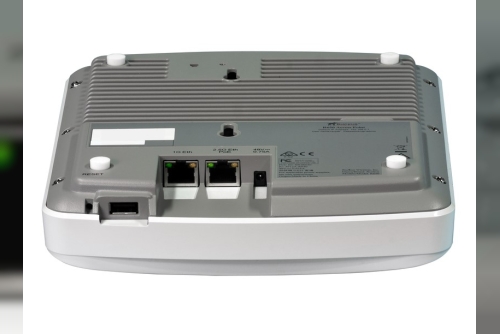Introduction
In industries dealing with electrical installations and hazardous environments, cable management plays a crucial role in ensuring safety, reliability, and performance. One of the critical components in achieving this is the use of Double Compressor Glands. These devices ensure that cables are securely fixed and protected, offering a safe connection between cables and enclosures. In this post, we’ll dive deep into what double compressor glands are, how they work, their benefits, and applications, along with frequently asked questions.
What is a Double Compressor Gland?A double compressor gland is a mechanical device used to terminate and secure the ends of electrical cables, ensuring that they do not slip or become loose. Double compression glands offer an extra layer of compression on both the cable sheath and the armouring, ensuring a tight seal and enhanced mechanical protection. They are predominantly used in environments where enhanced sealing, mechanical strength, and environmental protection are necessary.
These glands are widely used in industries such as oil and gas, petrochemical plants, power generation, and other high-risk areas where safety is paramount. Double compression glands are designed to withstand harsh environmental conditions, resist wear, and offer protection against dust, moisture, and hazardous materials.
How Does a Double Compressor Gland Work?Double compression glands work by providing compression at two points – one on the cable’s outer sheath and the other on the cable’s inner armor. This dual compression ensures that the cable remains securely fixed in place and prevents the ingress of contaminants such as dust, water, or gases. The design typically includes the following components:
Sealing ring: Creates a tight seal around the cable, preventing external factors like dust and moisture from entering the enclosure. Inner compression: Compresses the cable’s armor, ensuring mechanical protection and grounding. Outer compression: Compresses the outer sheath, securing the cable and providing an additional seal against environmental factors.The double compression mechanism ensures that cables remain firmly anchored in hazardous or high-vibration environments, which is vital for ensuring continuous operation and preventing accidents.
Benefits of Double Compressor Glands1. Enhanced Cable Protection: The double compression mechanism provides added protection to both the inner and outer cable layers, reducing the risk of wear and tear.
2. Improved Sealing: With two layers of sealing, double compressor glands offer superior resistance to dust, moisture, and gas ingress, making them ideal for hazardous locations.
3. Greater Mechanical Strength: The double compression provides a more robust fixation, ensuring that the cable remains in place even in high-vibration environments.
4. Versatile Applications: They are suitable for both indoor and outdoor applications, handling a wide range of environmental conditions, including extreme temperatures, moisture, and exposure to chemicals.
5. Compliance with Safety Standards: Many double compressor glands meet the necessary industry standards (e.g., IP68, ATEX), ensuring safety in potentially explosive environments.
Applications of Double Compressor GlandsDouble compressor glands are used in a variety of applications across different industries. Some of the common areas where they are utilized include:
1. Oil and Gas Industry: The oil and gas sector requires stringent safety measures due to the high-risk nature of the materials being processed. Double compressor glands ensure that electrical installations in these environments are safe and protected from leaks, sparks, and other hazards.
2. Petrochemical Plants: These plants deal with corrosive chemicals and volatile materials, making the secure installation of cables essential. Double compressor glands provide the necessary sealing and protection from potentially hazardous elements.
3. Power Generation: Power plants often operate in environments where there is a risk of water or dust ingress, and where cables must remain securely in place. Double compressor glands offer robust sealing and mechanical strength to ensure continuous and safe operation.
4. Marine Environments: In marine applications, cables are exposed to moisture, salt, and other corrosive elements. The double compression technology ensures the cables remain sealed and protected from these elements, ensuring longevity and reliable performance.
5. Mining Industry: Mining operations often involve high levels of vibration and exposure to dust and moisture. Double compressor glands provide the necessary protection to ensure cables remain securely fixed in place and are protected from environmental factors.
How to Choose the Right Double Compressor GlandWhen selecting a double compressor gland for your application, several factors should be considered:
1. Cable Type: Ensure that the gland is compatible with the type of cable being used, whether it's armored or unarmored.
2. Environmental Conditions: Consider the environmental factors, such as exposure to moisture, dust, chemicals, or extreme temperatures. Ensure the gland has the necessary ingress protection (IP) rating for your application.
3. Size and Fit: Choose a gland that fits the size and diameter of your cable. Incorrect sizing can lead to inadequate sealing and mechanical failure.
4. Certification and Standards: Verify that the gland meets industry-specific safety standards, such as ATEX, IP68, or IECEx, depending on your application.
Maintenance and Installation Tips1. Proper Installation: It is crucial to follow the manufacturer’s guidelines for installation to ensure the gland functions properly. Incorrect installation can compromise the sealing and mechanical strength of the gland.
2. Regular Inspection: Regularly inspect the gland to check for signs of wear or damage. In harsh environments, frequent inspection can prevent costly downtime due to failure.
3. Re-tightening: Over time, glands may loosen due to vibration or environmental conditions. Re-tightening the gland can help maintain a secure connection and prevent ingress.
5 Frequently Asked Questions about Double Compressor Glands1. What is the difference between single and double compressor glands?
A single compression gland provides sealing and mechanical support at one point (on the outer sheath), whereas a double compression gland provides sealing and support at two points – on both the outer sheath and the armor. This offers better mechanical strength and sealing in harsh environments.2. Where are double compressor glands typically used?
Double compressor glands are used in hazardous environments such as oil and gas, petrochemical plants, power generation facilities, and mining operations. They are designed to withstand harsh environmental conditions and provide enhanced safety and reliability.3. Are double compressor glands waterproof?
Yes, most double compressor glands come with an IP68 rating, making them waterproof and dustproof. They are designed to prevent the ingress of water, dust, and gases, ensuring safe operation in challenging conditions.4. Can double compressor glands be used in explosive environments?
Yes, many double compressor glands are certified for use in explosive environments and meet standards such as ATEX and IECEx, making them suitable for hazardous locations where explosive gases or dust may be present.5. How do I ensure proper installation of a double compressor gland?
To ensure proper installation, follow the manufacturer’s guidelines carefully, and use the correct size gland for your cable. Regular inspections and re-tightening, as necessary, can help maintain a secure seal and prevent mechanical failure.By understanding the importance of double compressor glands, industries can ensure that their electrical installations are safe, reliable, and protected from the environment. Whether in hazardous environments or standard industrial settings, these glands are crucial components for long-term cable safety and performance.












